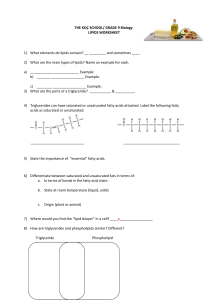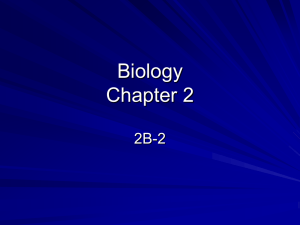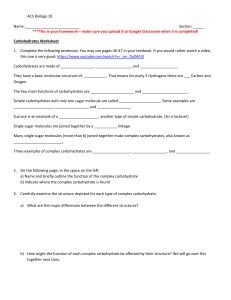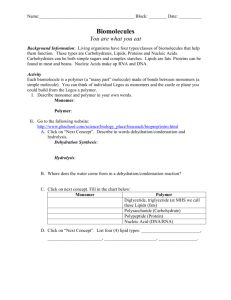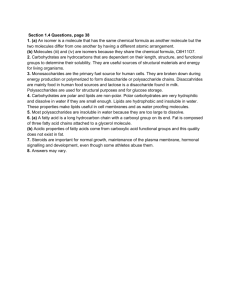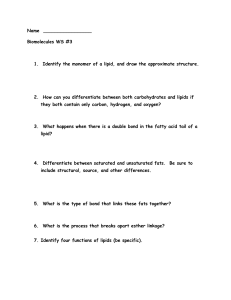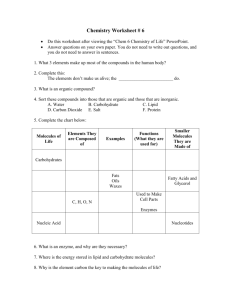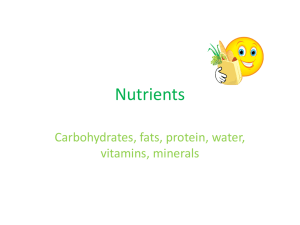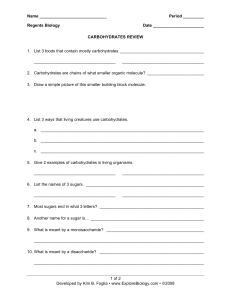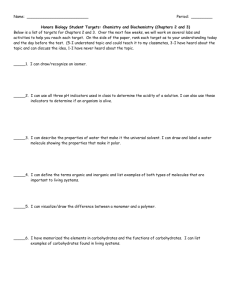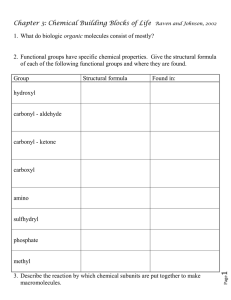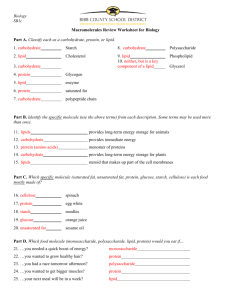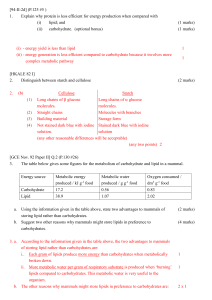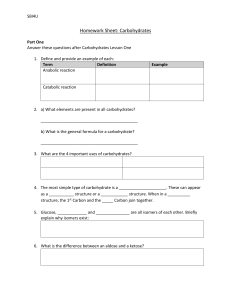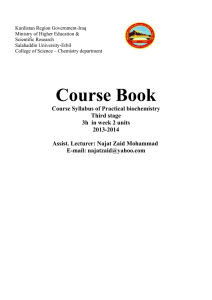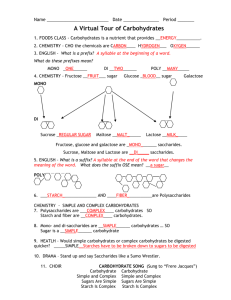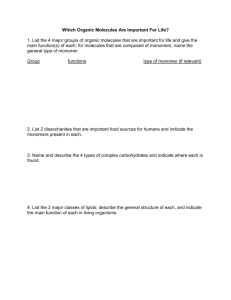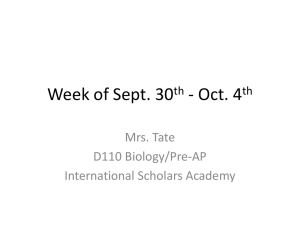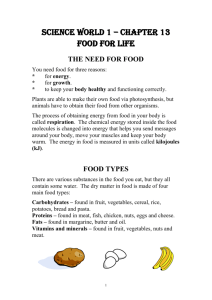Biological Molecules –Carbohydrates and lipids
advertisement
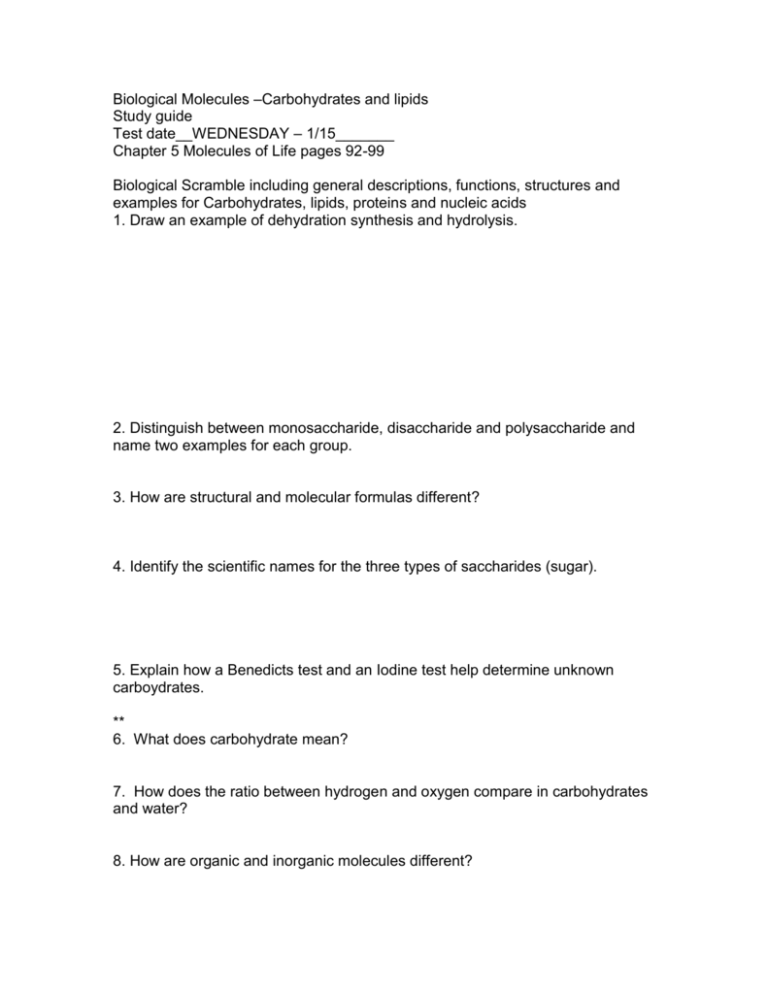
Biological Molecules –Carbohydrates and lipids Study guide Test date__WEDNESDAY – 1/15_______ Chapter 5 Molecules of Life pages 92-99 Biological Scramble including general descriptions, functions, structures and examples for Carbohydrates, lipids, proteins and nucleic acids 1. Draw an example of dehydration synthesis and hydrolysis. 2. Distinguish between monosaccharide, disaccharide and polysaccharide and name two examples for each group. 3. How are structural and molecular formulas different? 4. Identify the scientific names for the three types of saccharides (sugar). 5. Explain how a Benedicts test and an Iodine test help determine unknown carboydrates. ** 6. What does carbohydrate mean? 7. How does the ratio between hydrogen and oxygen compare in carbohydrates and water? 8. How are organic and inorganic molecules different? 9. How are saturated and unsaturated fats different? 10. List 3 lipid health risks. 11. Study the lab analysis for “Carbohydrate: Chemistry and Identification * Know how to test to identify different types of carbohydrates - Vocabulary: A. monomer B. polymer C. lipid D. triglyceride E. steroid F. phospholipid – What a cell membrane is made out of G. saturated fat H. unsaturated fat I. hydrophilic – Attracted to water J. hydrophobic K. glycogen – How animals store energy; sugar chain
